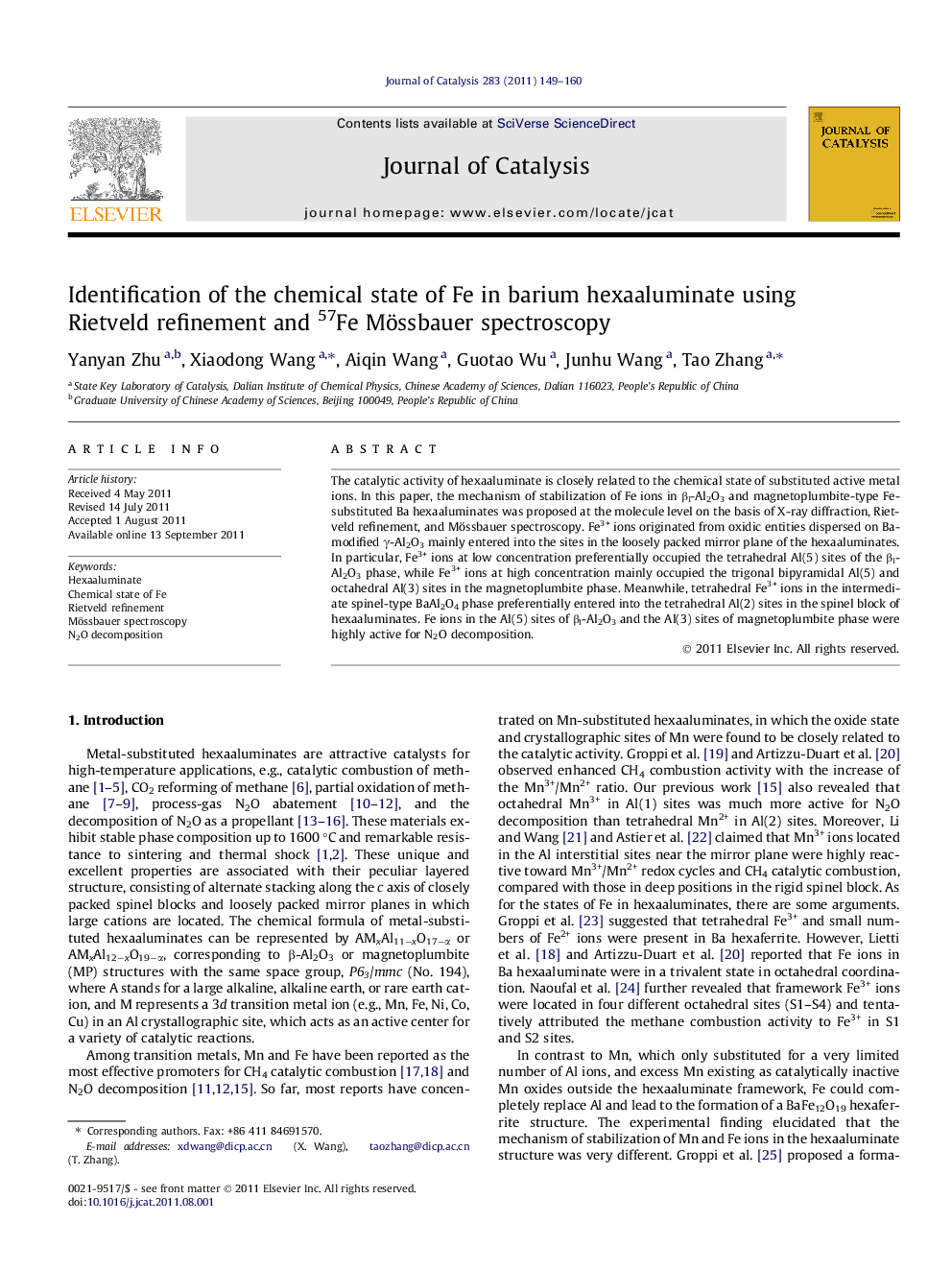| Article ID | Journal | Published Year | Pages | File Type |
|---|---|---|---|---|
| 61696 | Journal of Catalysis | 2011 | 12 Pages |
The catalytic activity of hexaaluminate is closely related to the chemical state of substituted active metal ions. In this paper, the mechanism of stabilization of Fe ions in βI-Al2O3 and magnetoplumbite-type Fe-substituted Ba hexaaluminates was proposed at the molecule level on the basis of X-ray diffraction, Rietveld refinement, and Mössbauer spectroscopy. Fe3+ ions originated from oxidic entities dispersed on Ba-modified γ-Al2O3 mainly entered into the sites in the loosely packed mirror plane of the hexaaluminates. In particular, Fe3+ ions at low concentration preferentially occupied the tetrahedral Al(5) sites of the βI-Al2O3 phase, while Fe3+ ions at high concentration mainly occupied the trigonal bipyramidal Al(5) and octahedral Al(3) sites in the magnetoplumbite phase. Meanwhile, tetrahedral Fe3+ ions in the intermediate spinel-type BaAl2O4 phase preferentially entered into the tetrahedral Al(2) sites in the spinel block of hexaaluminates. Fe ions in the Al(5) sites of βI-Al2O3 and the Al(3) sites of magnetoplumbite phase were highly active for N2O decomposition.
Graphical abstractThe stabilization of Fe3+ ions in iron-substituted βI-Al2O3 and magnetoplumbite type barium hexaaluminates is discussed in relation to their activity in the decomposition of N2OFigure optionsDownload full-size imageDownload high-quality image (102 K)Download as PowerPoint slideHighlights► The chemical state of Fe depended on the structure type of barium hexaaluminate. ► Fe3+ ions in BaAl2O4 entered into tetrahedral Al(2) sites in the spinel block. ► Fe3+ ions in oxidic entities entered into some specific sites in the mirror plane. ► Distorted Al(5) and octahedral Al(3) sites were easily occupied by Fe3+ ions. ► Fe ions in the mirror plane were more active for N2O decomposition.
